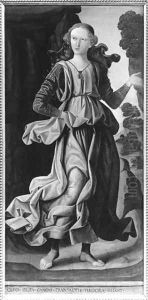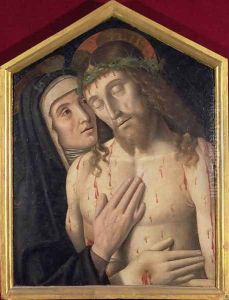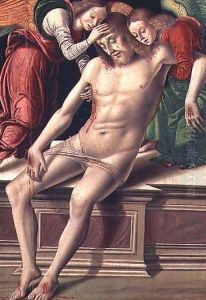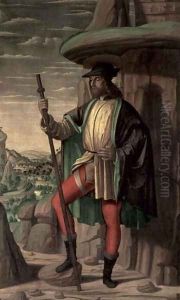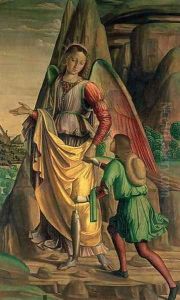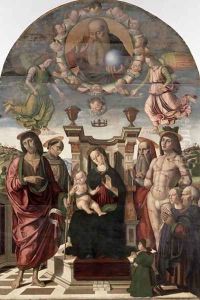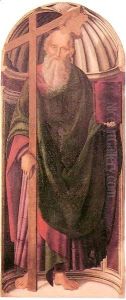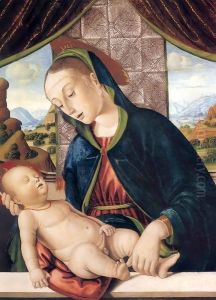Giovanni Santi or Sanzio Paintings
Giovanni Santi, also known as Giovanni di Santi or Sanzio, was an Italian painter, poet, and the father of the famed Renaissance artist Raphael. Born around 1435 in the Duchy of Urbino, Italy, Santi was not only a significant figure in the art world of his time but also played a crucial role in the early development of his son Raphael's career. His work, though not as widely recognized as his son's, provides valuable insight into the artistic environment that influenced one of the Renaissance's greatest minds.
Santi's artistic style was typical of the Quattrocento period, characterized by its detailed observation of nature and a softer, less sculptural approach than that of his Florentine contemporaries. He was deeply influenced by the works of Piero della Francesca and Melozzo da Forlì, evident in his use of perspective and light to create depth and volume. Santi worked on several significant projects during his career, including frescoes for the church of San Domenico in Urbino and the Ducal Palace of Urbino. His works are known for their delicate color palette and detailed landscapes, which would later be reflected in Raphael's work.
Aside from his painting, Giovanni Santi was also noted for his written work, particularly a rhymed chronicle that mentioned many contemporary artists, which is an important source for understanding the cultural and artistic milieu of the time. His poetry, though less known, reflects the intellectual atmosphere of the Urbino court, renowned for its patronage of the arts under the leadership of Federico da Montefeltro.
Giovanni Santi died in 1494, but his legacy lived on through Raphael, who would become one of the defining artists of the Renaissance. While much of Santi's work has been overshadowed by his son's achievements, his role as a teacher and mentor to Raphael, as well as his contributions to the Urbino artistic scene, ensure his place in the history of Italian Renaissance art.
